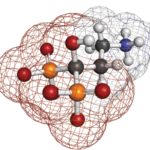Walk with Ease
By Christine A. Pellegrini, PhD, et al.
Why was this study done? Many adults with arthritis face barriers to attending in-person physical activity programs; thus, we converted a traditional in-person walking program (the Arthritis Foundation’s Walk with Ease program) for telephone delivery and examined the effects of the telephone-delivered program on activity and arthritis-related outcomes over 12 months.
What were the study methods? Adults (n=267) who reported doctor-diagnosed arthritis were randomized to a telephone-based Walk with Ease program (WWE-T) or a control group. Participants in WWE-T received two telephone calls each week for six weeks. The first call each week was led by a WWE.certified leader, focused on education related to exercising with arthritis, and included between five and 17 other adults with arthritis. The second call was a one-on-one call with the WWE leader and focused on problem solving and goal setting. Outcomes were assessed at baseline, six weeks, and six and 12 months.
What were the key findings? Participants in WWE-T completed 82% of the calls, and 93% of participants were satisfied with the program. At six weeks, participants in WWE-T had greater improvements in physical function, fatigue, self-efficacy and activity impairment due to health than the control group. At six months, WWE-T led to improved function and self-efficacy and greater reductions in depression symptoms and activity impairment than the control group. At 12 months, physical activity was not significantly different across groups; however, participants in WWE-T had better physical function, higher arthritis self-efficacy, lower depression symptoms and lower impairment in daily activities than before the program started.
What were the main conclusions? A six-week telephone-delivered Walk with Ease program led to significant improvements in both short- and long-term arthritis-related outcomes. Specifically, improvements in physical function, self-efficacy and impairment in daily activities were seen over one year.
What are the implications for patients and clinicians? These results suggest that a remotely delivered telephone walking program may be an effective alternative for adults with arthritis who face barriers to attending in-person programs. Specifically, clinicians could recommend this phone-based walking program to inactive patients with arthritis who may not have the access, or the ability, to attend in-person community physical activity programs.
The study: Pellegrini CA, Wilcox S, Kim Y, et al. Effectiveness of a telephone-delivered walk with ease program on arthritis-related symptoms, function, and activity: A randomized trial. Arthritis Care Res (Hoboken). 2025 Mar 3. Epub ahead of print.


